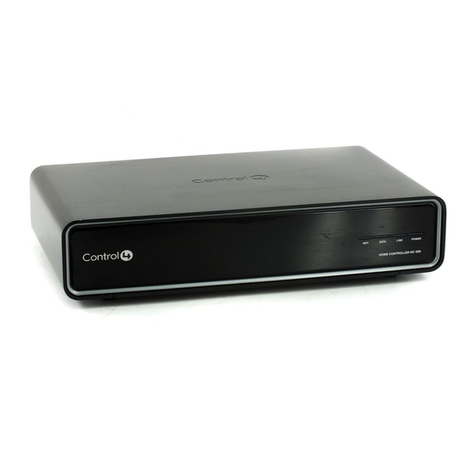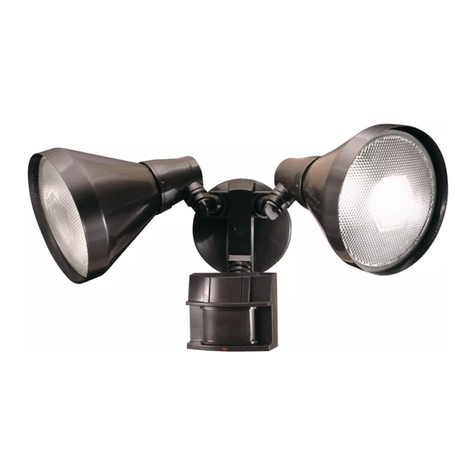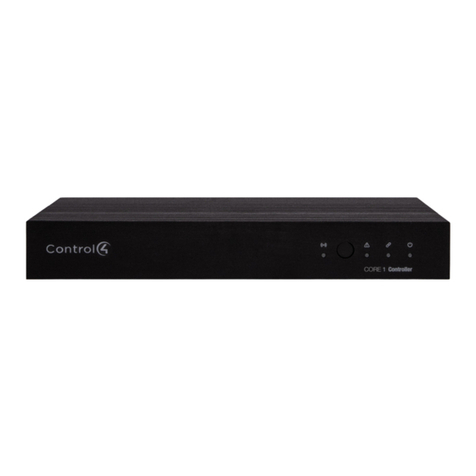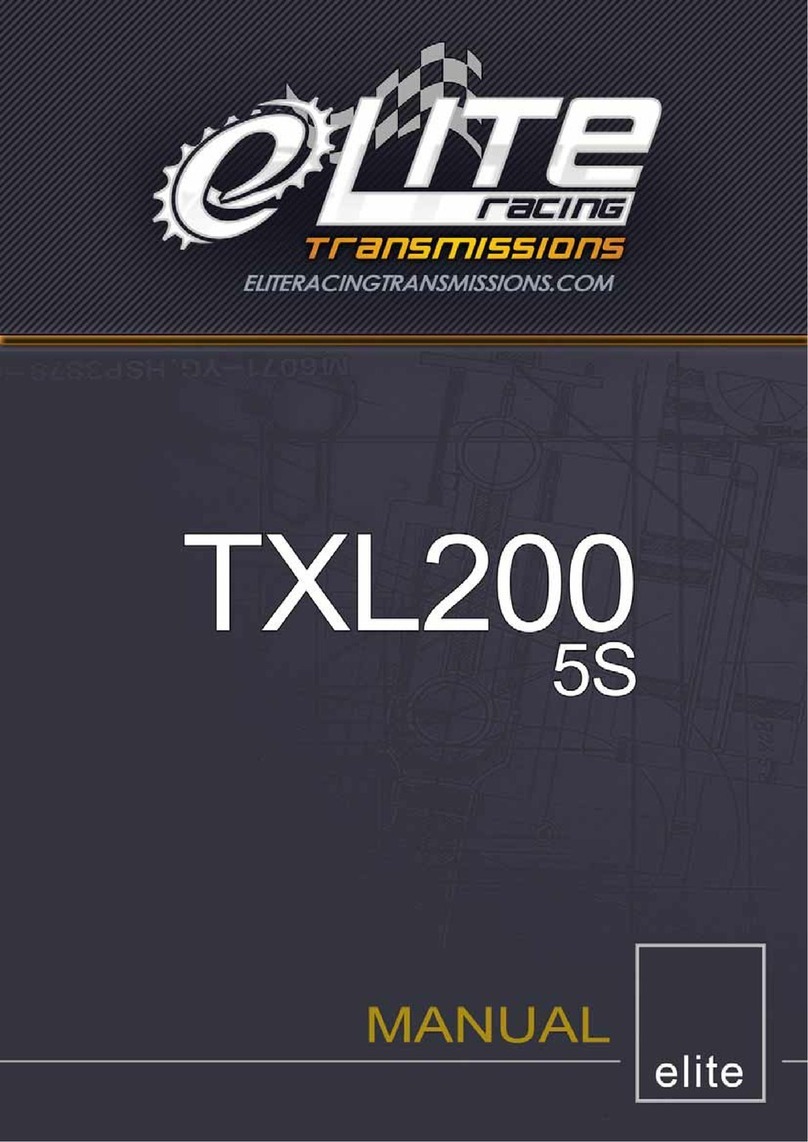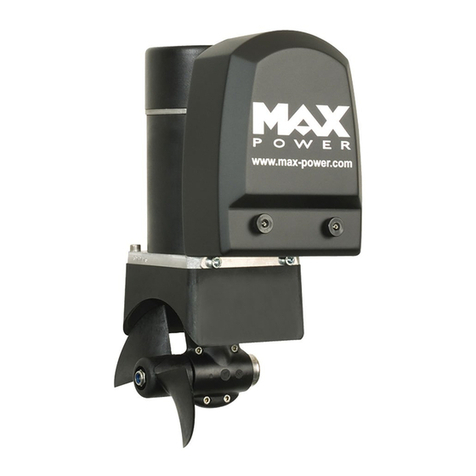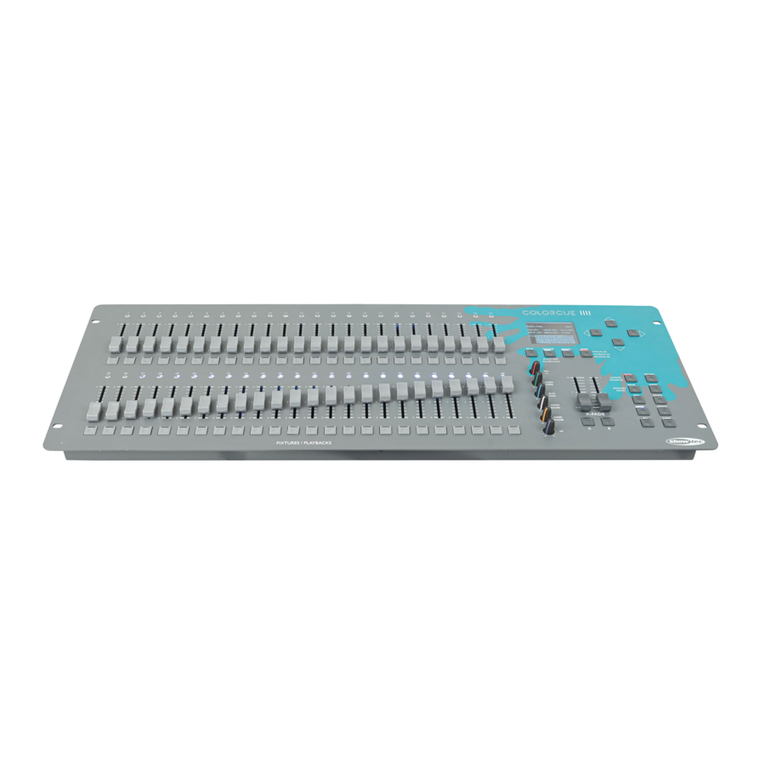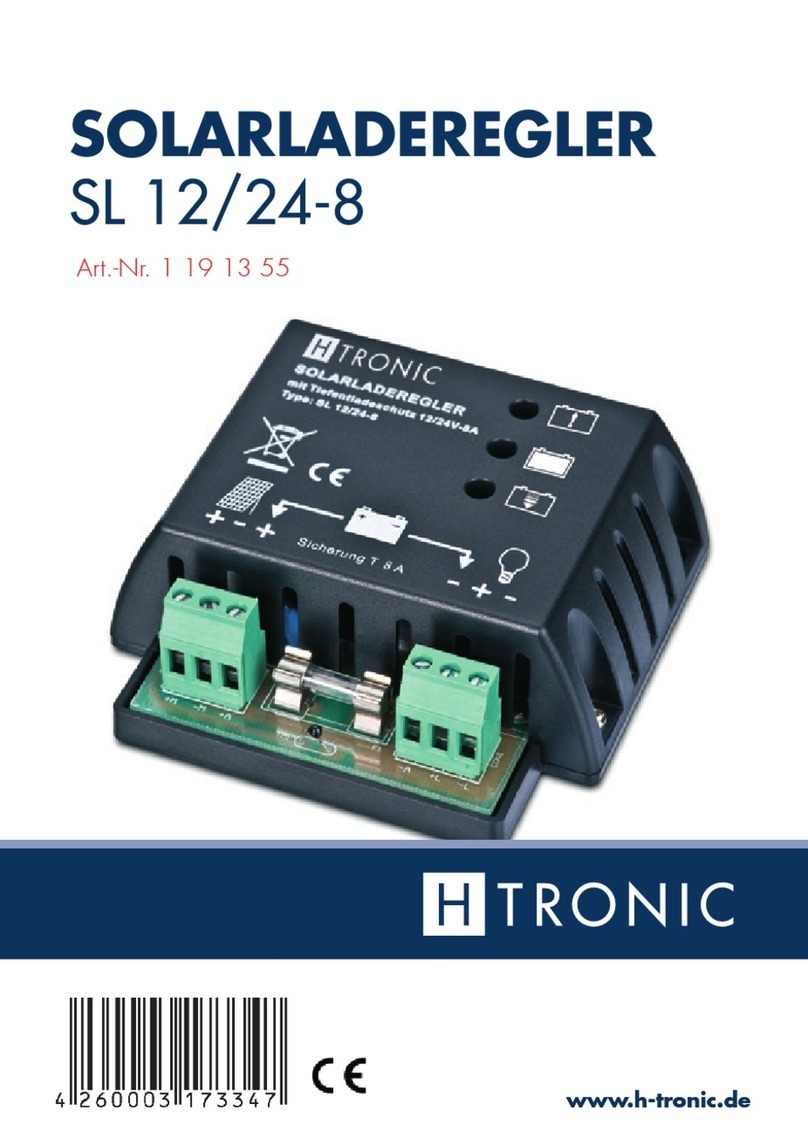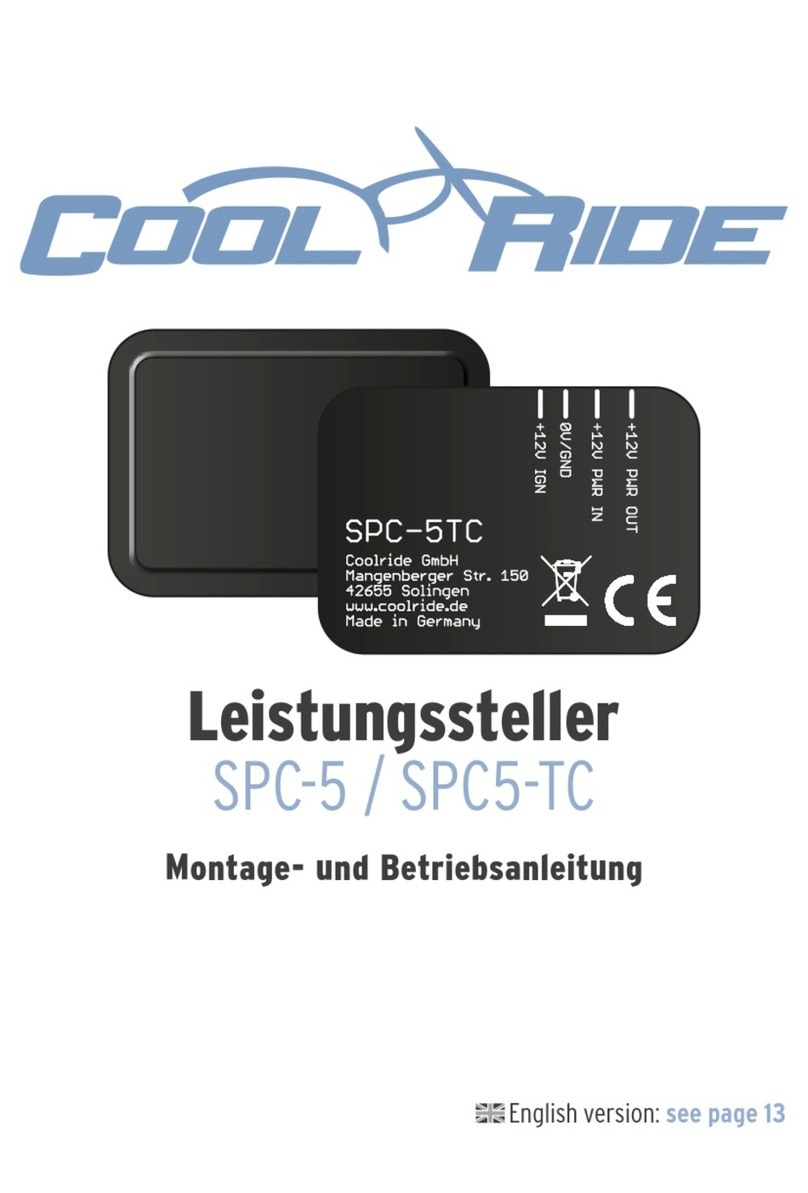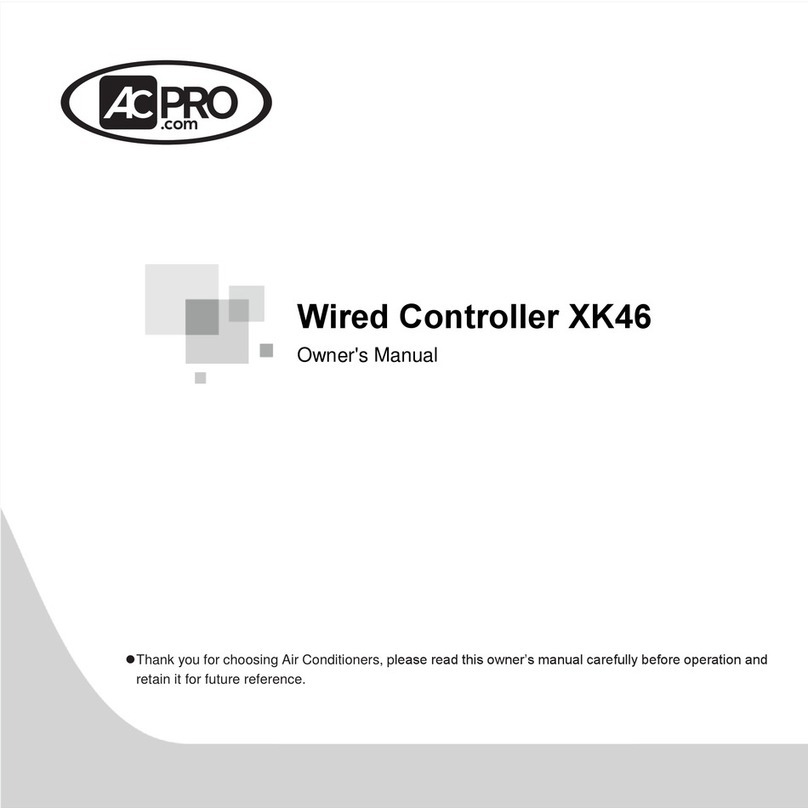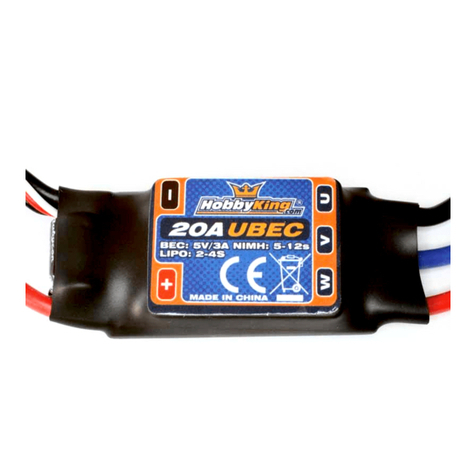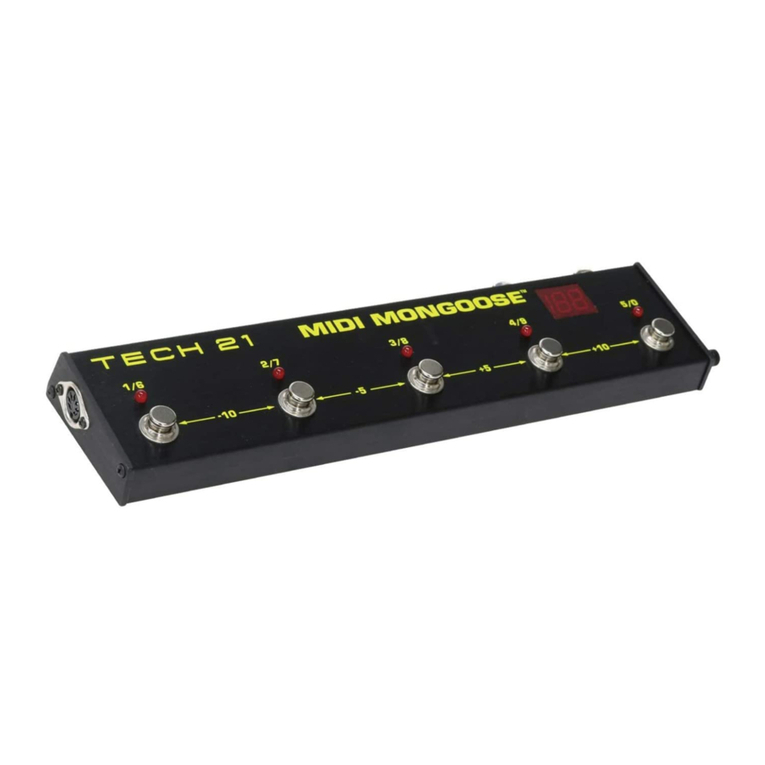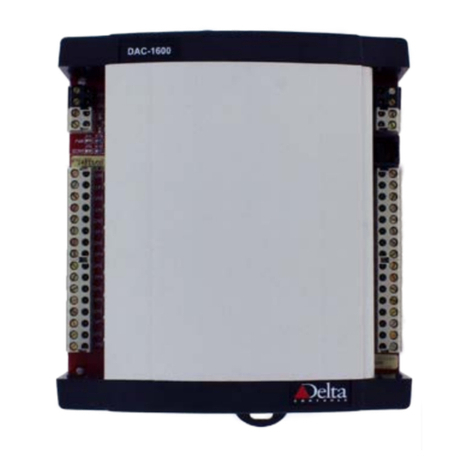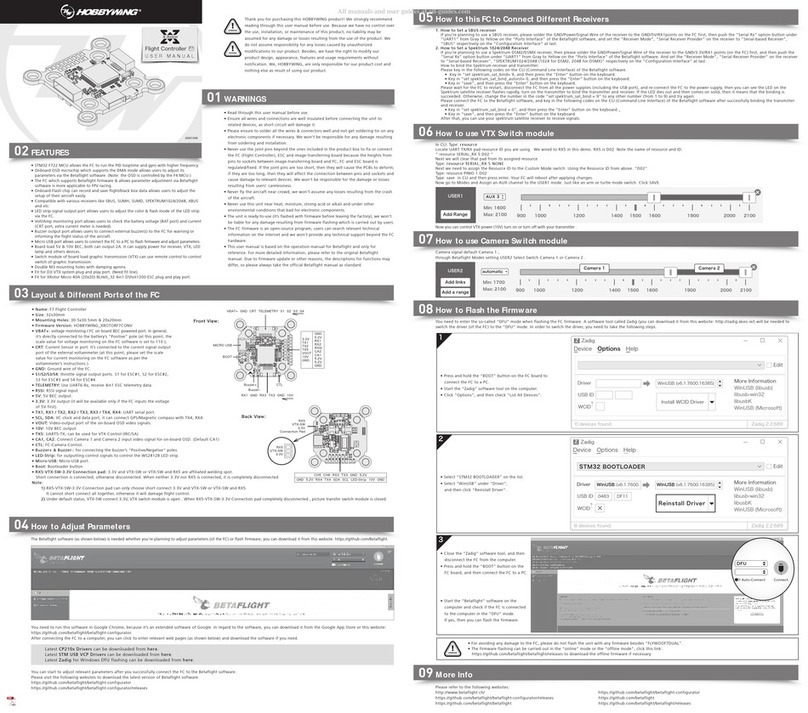Denison Hydraulics Jupiter 900 User manual

Publ. 9-AM683-A
replaces 9-AM683
DENISON HYDRAULICS
Jupiter 900 Driver Card
Panel Mount Version
Series S20-14087-0 Design C
Back to Content

MANUFACTURER’S NAME DENISON HYDRAULICS
MANUFACTURER’S ADDRESS 14249 Industrial Parkway
Marysville, Ohio 43040-9504, USA
declares that the product
PRODUCT NAME Jupiter 900 Driver Card (Panel Mount Version)
PRODUCT PART NUMBER S20-14087-0
conforms to the following EMC: EN50081-2: March 1994 generic emissions for heavy industry1
product specifications EN55011: 7/1992 radiated or conducted EMI – 30-1000MHz
EN50082-2: 1995 generic immunity for heavy industry1
ENV50140: 8/1993 – 10V/m, 80-1000MHz – Performance Criteria B
EN61000-4-2, IEC801-2 electrostatic discharge (ESD)
8KV air discharge – Performance Criteria A
4KV contact discharge – Performance Criteria A
EN61000-4-4: 5/1995 fast transient rejection
2KV power supply wires – Performance Criteria B
SUPPLEMENTARY
INFORMATION This product is the panel-mounted version of the Jupiter 900 Driver, S20-14078, which
was tested in an EMC TEST Laboratory in Germany.The S20-14087 uses the same
electronic assembly as the S20-14078 less the Euro-style front panel assembly. Hence
by construction, this unit complies with the EMC Directive 89/336 and the CE Marking
requirements.
1The product group was tested in a typical system configuration with DENISON
HYDRAULICS Jupiter Series products or recommended second source products.
The tested product was mounted in a NEMA 4 enclosure (or equivalent) and all cables
exiting the enclosure were shielded (screened). Enclosure and cable shields were con-
nected to earth ground (PE).
USA CONTACT Office of Director of Quality
DENISON HYDRAULICS
14249 Industrial Parkway
Marysville, Ohio 43040
EUROPEAN CONTACT DENISON HYDRAULICS Sales Office
or Office of Quality Manager
DENISON HYDRAULICS GmbH
Gerresheimer Strasse 9
D-40721 Hilden
Deutschland
See Installation & Operation Guidelines under Procedures.
DECLARATION OF CONFORMITY
PER EMC DIRECTIVE 89/336/EEC AND EN45014
i
Back to Content

IMPROVEMENTS AND CHANGES
WORTH NOTING 1. Improved power supply specification — 22-29VDC(min-max): unit will tolerate
overvoltage excursions up to 40 volts.
The old version specified 24-28VDC, (minimum to maximum). If the input voltage
accidentally exceeded 30 volts, including any AC peaks, the converter would fail per-
manently. Mobile applications with battery chargers could exceed the 30 volts; but
also fixed industrial applications with unregulated, 28VDC power supplies will readily
exceed 35 volts due to AC input tolerance and output load variations.
2. Eliminated the two 1/2 amp Micro-Fuses.The new DC-DC converter has internal
short-circuit protection, eliminating the need for fuses.Total current available from
±15Vdc source is 330mA, that is, onboard and off-board. Unit has over-current
protection.
3. Front panel STEP COMMAND is functional in both LOCAL and REMOTE modes.
Older versions only worked in LOCAL mode.(This applies to Eurocard version
S20-14078 only).
4. Added option to permit isolated power source for E-STOP function. This option is
factory set to operate as previous versions. If isolated power source is desired, move
jumper JP4 from position A-B (internal GND) to B-C (isolated GND) and connect the
isolated power ground to terminal C24 E-STOP RET. It made sense
to provide this isolation option to the E-STOP function since the SOFT-STOP and
REV CMD function can be isolated.
NOTE:Terminal C24 on versions prior to REV. C was REV CMD RET.Terminal
C22 is now the REV CMD RET and SOFT-STOP RET. (We ran out of terminals).
5. Added 400 Hz, as a third choice for pulse-width modulation frequency. The factory
set is 200Hz, JP2 (A-B). For 400Hz set jumper JP2 to B-C and for 120Hz remove
the jumper (store the jumper on one of the pins).
6. The Ramp time minimum values have increased to 0.2 and 0.8 seconds.This should
be of little consequence in most application.The ramp function can be shut off if
desired.
7. The IA and IB LED’s illuminate somewhat proportionately to the output current.
This is a good troubleshooting tool.
PRODUCT UPDATE INFORMATION
ii
Back to Content

CONTENTS
iii
PAGE
European EMC Directive 89/336/EEC
Declaration of Conformity i
product up-date information ii
table of contents iii
technical specifications 1-2
power supply requirements 1
reference voltages 1
remote inputs 1
operating temperature 1
ramp generator 1
output driver 1
feedback inputs 1
input command disable 1
emergency stop input 1
reverse CMD input 1
soft stop input 1
LED indicators 2
potentiometer adjustments 2
test points 2
mechanical 2
I/O connector pin assignment 2
product description 3
system features 3
general 3
functional description 4-5
output 4
PWM frequency 4
input 4
ramp generator 4
controls & indicators 4
emergency stop option 4
soft stop option 5
reverse CMD option 5
ramp-at-zero option 5
closed-loop-control 5
procedures 6
installation & operation guidelines 6
set-up procedure 6
installation drawings 7-9
power supply outline 7
900 drivercard outline 8
jumper & switch settings 9
900 driver functional block diagram 10
input signal options diagrams 11-12
remote voltage & potentiometer 11
current-loop with interlock 12
application diagrams 13-19
open-loop control scheme 13
closed-loop control scheme 13
most common application 14
open-loop speed w/ hp limit 15
closed-loop speed w/ command forward 16
closed-loop speed w/ com. forward & hp lmt 17
closed-loop speed w/ pi 18
closed-loop speed w/ pi & hp lmt 19
Back to Content

TECHNICAL SPECIFICATIONS
1
POWER SUPPLY
REQUIREMENTS 22-29VDC @ 1 Amp (nominal)
REFERENCE VOLTAGES
Available to user
+15VDC @ 250 mA (max.)
–15VDC @ 250 mA (max.)
+10VDC @ 0.0025 Amps max.
–10VDC @ 0.0025 Amps max.
REMOTE INPUTS
Potentiometer
10K Ohms nominal, 5K Ohms minimum
Input voltage range
±5VDC, ±10VDC
Input impedance
100K Ohms, 200K Ohms
Current loop input
4-20mA, ±20mA
Current loop input impedance
249 Ohms
Auxiliary voltage input
±10VDC
Reverse command input
+15 - +24VDC
Soft stop input
+15 - +24VDC
OPERATING TEMPERATURE
RANGE 0-65°C
RAMP GENERATOR
Switchable (DIP switch)
On or Off
Positive ramp (rising) range A
0.2-6 sec.
Positive ramp (rising) range B
0.8-40 sec.
Negative ramp (falling) range A
0.2-6 sec.
Negative ramp (falling) range B
0.8-40 sec.
OUTPUT DRIVER
Pulse width modulation (PWM) driver with current feedback and short circuit protection.
PWM frequency
120Hz, no jumper
200Hz, JP2 position A-B
400Hz JP2 position B-C
I (A,B) minimum
0-460mA
I (A,B) maximum w/24 Ohm load
I min - 800mA
FEEDBACK INPUTS
Horsepower limiting command
±10VDC
Major loop
±10VDC
INPUT COMMAND DISABLE
Gnd to disable
EMERGENCY STOP INPUT Apply +15 to 24VDC for normal operation
Remove 24VDC for emergency stop.
Remove jumper JP4 for isolated signal source.
REVERSE CMD INPUT No connection for normal operation.
Apply +15V to 24VDC and GND to reverse command.
SOFT STOP INPUT JP3 factory set to position B-C, soft stop disabled.
Set JP3 to position A-B to enable soft stop.
Apply 24VDC and GND for normal operation.
Remove 24VDC for soft stop.
Back to Content

LED INDICATORS
Power
±15VDC supply operational
IA
Output current to coil A
IB
Output current to coil B
Stop
Both “A” & “B” coils disabled,
same as emergency stop.
POTENTIOMETER
ADJUSTMENTS
+ Ramp
Adjusts positive ramping time
– Ramp
Adjusts negative ramping time
IAMin
Adjusts coil A minimum current
IBMin
Adjusts coil B minimum current
IAMax
Adjusts coil A maximum current
IBMax
Adjusts coil B maximum current
TEST POINTS
In
Input command (±10VDC)
Ramp
Ramp output (±10VDC)
Out
Coil ouput current scaled to ±1mV per ±1mA
Coil A is a positive value,
Coil B is a negative value
Gnd
Signal ground reference
MECHANICAL
Dimensions, panel mounted
100 x 176 mm (3.94 x 6.90 in.)
Connector
32 screw-terminals, 2 piece construction
for quick disconnect
Weight
0.22 kg (0.484 Lbs.)
I/O CONNECTOR
PIN ASSIGNMENTS A2: +10V Ref. @ 2.5mA C2: Test Point Command In
S20-14087 A4: –10V Ref. @ 2.5mA C4: Test Point Ramp First-Stage Ampl.
A6: ±5V Command C6: Test Point Ramp Out
A8: ±10V Command C8: Test Point Current Out Coil A/B
A10: ±10V AUX Command C10: Coil A PWM Output
A12: Signal Ground C12: Coil A Return
A14: Current-Loop In C14: Ramp-at-Zero Open-Collector Unit
A16: Current-Loop Ret C16: Command Inverted
A18: Major-Loop Feedback C18: Coil B PWM Output
A20: HP Limiting Command C20: Coil B Return
A22: Soft-Stop Input C22: Soft-Stop Return / Rev. Comm. Ret.
A24: Reverse Command Input C24: E-Stop Return
A26: Signal Ground C26: Command Disable CMDDIS/
A28: E-Stop Input C28: +15V @ 250mA Power Out
A30: DC Power Input C30: –15V @ 100mA Power Out
A32: Power Ground C32: Power Ground
TECHNICAL SPECIFICATIONS
2
Back to Content

SYSTEM FEATURES • Controls 9A electro hydraulic control for Gold Cup Series and premier series open
loop pumps
• Open or closed loop control (w/options card S20-11716-0)
• Panel mounting (see S20-14078-0 for eurocard version)
• Separately adjustable positive and negative ramps (0.2-40 sec.)
• Multiple input commands
• Remote potentiometer (10K CT)
• ±5VDC and ±10VDC voltage inputs
• +4-20mA and ±0-20mA current loop inputs
• Auxiliary inputs
• Soft stop option
• Emergency stop option
• Reverse command option
• Special field calibration features
• Special safety features
GENERAL Jupiter driver card S20-14087-0 is a bidirectional pulse-width modulated current coil
driver used for proportional open-loop control of the 9A electro hydraulic controlled
pumps. Input commands to the card may be voltages, current loop, or potentiometer,
single ended or differential. Multiple input commands are permitted but must be inter-
locked by the user to insure that the card is controlled by only one input at a time.The
card also features two ranges of positive and negative ramping, remote emergency
shutdown control, options for soft stop, emergency stop and reverse command, as well
as provisions for closed-loop control with the Jupiter options card S20-11716.The driver
card is packaged for panel mounting and may be operated with any 22-29VDC filtered,
1 amp power supplies or with the Jupiter 900 power supply 762-30026, which provides
the required DC power in a panel mount package.
Open loop control
The driver card with its power supply accessory is used for open-loop control.
It provides multiple input commands and ramping.The panel mounted power supply fur-
nishes the driver card with regulated DC power and features screw terminals for
simplified panel wiring.
Closed loop control
The options card, S20-11716, is used in conjunction with the driver card for precise
closed-loop control. It features digital and DC tachometer feedback, horsepower limiting,
and PI control of feedback error. A panel mounted eurocard holder with
screw terminals is available for easy mounting. Power for the options card is obtained
from the driver card’s power supply.
PRODUCT DESCRIPTION
3
Back to Content

OUTPUT The output stage of the driver card is a two channel PWM (Pulse Width Modulated)
current source with current feedback for precise control of the current through the coil
regardless of the changes in coil resistance.The two outputs are protected against
short circuits across the coil and short circuits to ground.
PWM frequency
The frequency of the PWM high current driver is factory set to 200Hz (JP2 A-B). JP2
allows the frequency to be lowered to 120Hz by removing the JP2 jumper, or raised to
400Hz by moving JP2 to position B-C.
INPUT This panel-mounted version of the 900 driver operates with remote signals only; it does
not have a local command poteniometer.
The user has a choice of voltage, current-loop or potentiometer input signals.Voltage
inputs may be ±5V, or ±10V. Current-loop inputs are differential 4-20mA1 or ±0-20mA.
DIP switches on board are for current-loop set-up.
An auxilliary ±10V input is also available.This input provides the user more input
options.With all the input options provided, it is the user’s responsibility to interlock mul-
tiple inputs if driver card is to be controlled by one input at a time.
1 The reverse CMD input can be used to obtain bidirectional operation.
RAMP GENERATOR Adjustable positive and negative ramping of the output is provided in two ranges of
0.2-6 and .0.8-40 seconds. Ramping, on-off, and ramping ranges are selected by dip
switches on the card.
CONTROLS AND INDICATORS Key indicators, potentiometer adjustments, switches and test points are located on the
circuit board for monitoring, set-up and calibration purposes. LEDs are provided for indi-
cating the status of the power (internal ±15VDC supplies), the coil that is energized and
the state of the emergency stop function.
Potentiometer adjustments include ±ramps, IA,B min and IA,B max.Test points
are furnished for measurement of the input, output, ramp and signal ground.
EMERGENCY STOP OPTION The emergency stop (E-stop) input controls the K1 relay that provides 24VDC to the
output driver stage. Applying logic level +15 to 24VDC to the E-stop enables the driver
card output stage. Removing the E-stop signal will abruptly halt the output current.
(See soft-stop option). In revision level C and up an isolated E-stop signal option is
provided. If an isolated E-stop signal is required, remove the JP4 jumper and connect
the isolated signal common to terminal C24.
SOFT STOP OPTION The soft stop option is used to set the output current to zero at a rate set by the
ramp circuit. Placing JP3 in the A-B position will enable the soft stop option, position
B-C will disable the soft stop option. If the soft stop is enabled 24VDC and GND
must be connected to the soft stop input for normal operation. Removing 24VDC
from the soft stop input will turn off the output at a rate set by the ramp settings.
REVERSE CMD OPTION Connecting 24VDC and GND across the reverse CMD input will cause the output
to switch the current from one channel to the other at a rate set by the ramp circuit.
This will allow a unipolar command signal to control the pump on both sides of center.
WARNING: Once the reverse CMD input has been energized loss of this signal
will reverse the driver cards output signal.
RAMP-AT-ZERO OPTION The ramp-at-zero is an output that indicates when the ramp circuit output is at zero.
The ramp-at-zero output is 15VDC when ramp is at zero and 0VDC when ramp is not
at zero. One application for the ramp-at-zero function is to hold the integrator of the
Jupiter options card, S20-11716, at zero when system command is zero.
CLOSED-LOOP-CONTROL The driver card operating as a stand alone driver is used primarily for open-loop control.
With the Jupiter options card, S20-11716, the driver card can be used for closed-loop
speed control systems.The options card provides digital encoder and DC tachometer
feedback, horsepower limiting and PI control of the feedback error.
FUNCTIONAL DESCRIPTION
4
Back to Content

INSTALLATION & OPERATION
GUIDELINES • For EMC compatibility, card must be installed in a NEMA 4 or equivalent enclosure;
connect enclosure to earth ground.
• Shield (screen) all wires entering enclosure. Connect card end of shield to earth
ground. Leave other end of shield open.
• Use Denison Hydraulics recommended power supply P/N 762-30036.
• Disconnect power before inserting or removing card.
• Use high resistance meter for all testpoint measurements, Ri > 100K.
• Maximum wire length between driver card and pump 9A control valve is 150 feet of
16 AWG, operating at minimum 22VDC supply voltage, 0.35A coil current and 80°C
fluid temperature.When using 14 AWG distance can be increased to 240 feet.
SET-UP PROCEDURE 1. With the hydraulic system de-energized, connect the Jupiter 900 driver card
according to the attached block diagram, then apply 24VDC to the driver card.
The power LED should be illuminated and the stop LED should not be illuminated.
2. If the power LED is not lit, check the wiring and apply power again.
3. Connect a DVM (digital volt meter) to the IOUT test point and the GND test point
on the front panel.Turn IAmax and IBmax CCW. Apply a positive 3% command
signal to the appropriate input. Adjust the IAmin potentiometer until a value of
+0.124VDC (+0.124A) is read on the DVM. Apply a negative 3% command signal
to the appropriate input. Adjust the IBmin potentiometer until a value of –0.124VDC
(–0.124A) is read on the DVM. This is a preliminary setting.
4. Apply a positive 100% command signal to the appropriate input, then adjust the
IAmax potentiometer to give a value of +0.30VDC (+0.30A) on the DVM. Apply a
negative 100% command signal to the appropriate input, then adjust the IBmax
potentiometer to give a value of –0.30VDC (–0.30A) on the DVM. This is a
preliminary setting.
Note: Before energizing hydraulic system make sure that system can handle high flow
rate and that max pressure limit is set to prevent system damage.
5. Set the command signal to 0% and energize the hydraulic system. Slowy set
command signal to +100% and then adjust IA MAX potentiometer for desired max
hydraulic flow. Slowly decrease command signal while observing DVM at IOUT
testpoint. Set command slightly above the IMIN trip point and then adjust IAMIN
potentiometer until the minimum hydraulic output is at the desired level. Repeat the
IMAX and IMIN adjustments for best hydraulic operating characteristic. Adjustments
have slight interaction.
6. For bi-directional systems repeat step 5 above with a negative command signal and
adjust IB MAX and IBMINfor best operating characteristics.
PROCEDURES
5
Back to Content

INSTALLATION DRAWINGS
6
[mm]
Input: 85-264VAC
47-440HZ
0.6 AMP
Output: 24VDC
1.3 AMPS
DIMENSIONS IN INCHES [MILLIMETERS]
Back to Content

INSTALLATION DRAWINGS
7
Back to Content

INSTALLATION DRAWINGS
8
SWITCH AND JUMPER SETTINGS
Back to Content

900 DRIVER FUNCTIONAL BLOCK DIAGRAM
9
REVERSE CMD
SOFT-STOP
INVERTED
DIP SW1 MARKINGS
O = OPEN SW1A = 1
C = CLOSED (ON) SW1B = 2
SW1C = 3
SW1D = 4
Back to Content

INPUT SIGNAL OPTIONS
10
85–264VAC
47-440HZ
Back to Content

INPUT SIGNAL OPTIONS
11
85–264VAC
47-440HZ
Back to Content

APPLICATION DIAGRAMS
12
Back to Content

APPLICATION DIAGRAMS
13
COMMAND OUT (INVERTED)
DIP SW1 MARKINGS
O = OPEN SW1A = 1
C = CLOSED (ON) SW1B = 2
SW1C = 3
SW1D = 4
Back to Content

APPLICATION DIAGRAMS
14
COMMAND OUT (INVERT)
Back to Content

APPLICATION DIAGRAMS
15
COMMAND OUT (INVERT)
Back to Content

APPLICATION DIAGRAMS
16
COMMAND OUT (INVERT)
Back to Content
This manual suits for next models
1
Table of contents
